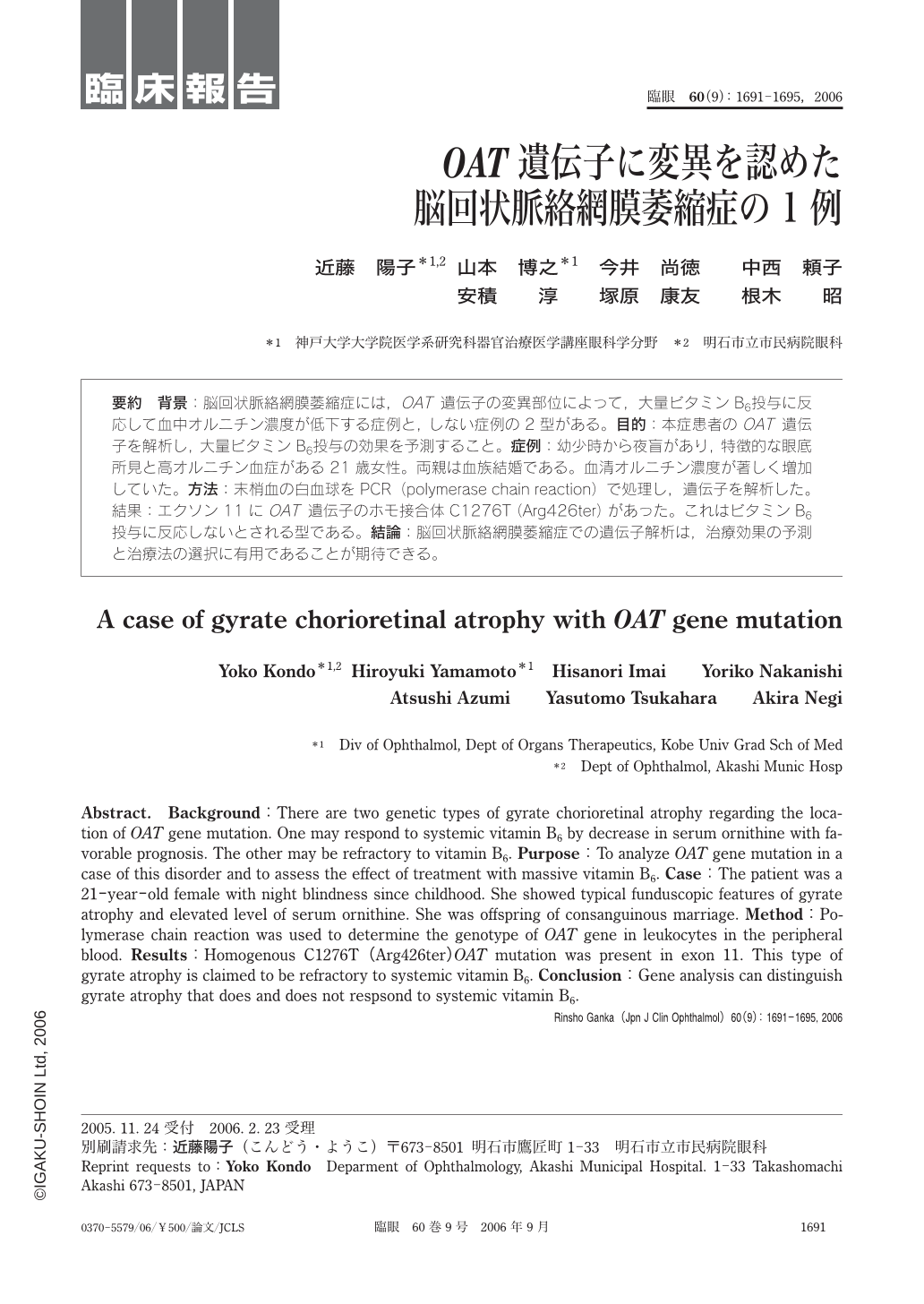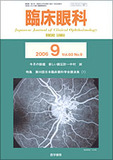Japanese
English
- 有料閲覧
- Abstract 文献概要
- 1ページ目 Look Inside
- 参考文献 Reference
要約 背景:脳回状脈絡網膜萎縮症には,OAT遺伝子の変異部位によって,大量ビタミンB6投与に反応して血中オルニチン濃度が低下する症例と,しない症例の2型がある。目的:本症患者のOAT遺伝子を解析し,大量ビタミンB6投与の効果を予測すること。症例:幼少時から夜盲があり,特徴的な眼底所見と高オルニチン血症がある21歳女性。両親は血族結婚である。血清オルニチン濃度が著しく増加していた。方法:末梢血の白血球をPCR(polymerase chain reaction)で処理し,遺伝子を解析した。結果:エクソン11にOAT遺伝子のホモ接合体C1276T(Arg426ter)があった。これはビタミンB6投与に反応しないとされる型である。結論:脳回状脈絡網膜萎縮症での遺伝子解析は,治療効果の予測と治療法の選択に有用であることが期待できる。
Abstract. Background:There are two genetic types of gyrate chorioretinal atrophy regarding the location of OAT gene mutation. One may respond to systemic vitamin B6 by decrease in serum ornithine with favorable prognosis. The other may be refractory to vitamin B6. Purpose:To analyze OAT gene mutation in a case of this disorder and to assess the effect of treatment with massive vitamin B6. Case:The patient was a 21-year-old female with night blindness since childhood. She showed typical funduscopic features of gyrate atrophy and elevated level of serum ornithine. She was offspring of consanguinous marriage. Method:Polymerase chain reaction was used to determine the genotype of OAT gene in leukocytes in the peripheral blood. Results:Homogenous C1276T(Arg426ter)OAT mutation was present in exon 11. This type of gyrate atrophy is claimed to be refractory to systemic vitamin B6. Conclusion:Gene analysis can distinguish gyrate atrophy that does and does not respsond to systemic vitamin B6.

Copyright © 2006, Igaku-Shoin Ltd. All rights reserved.


